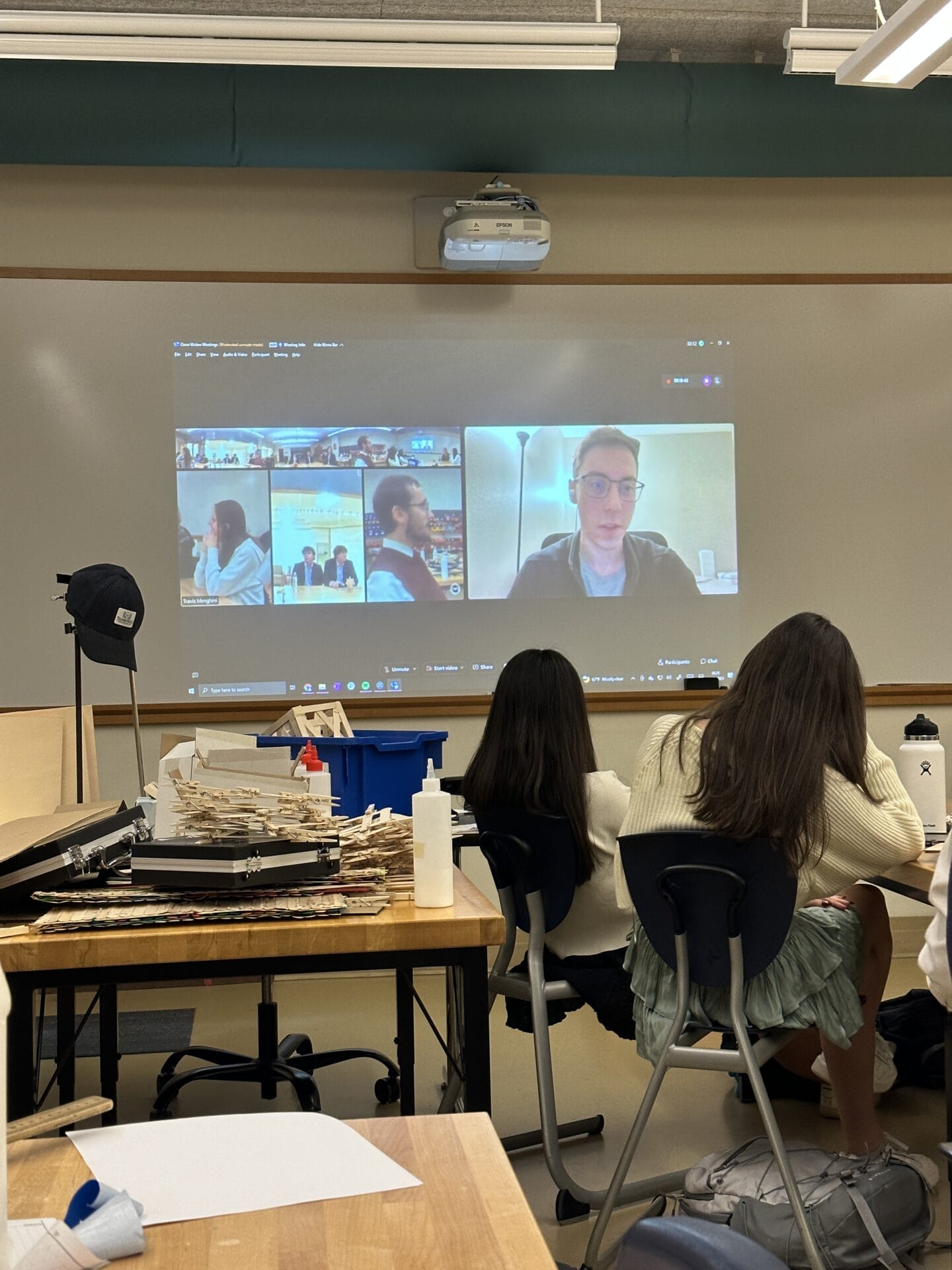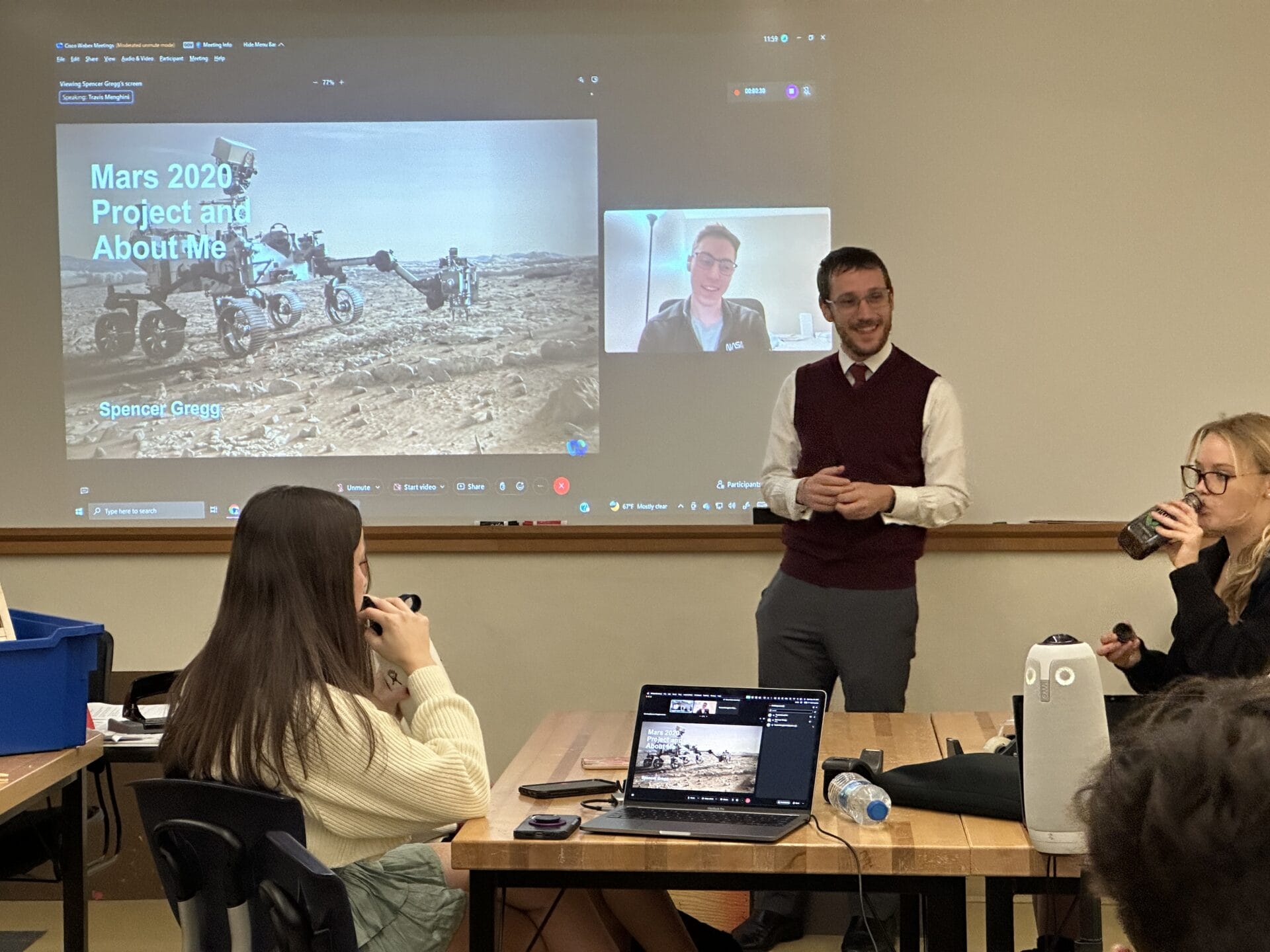NASA robotics systems engineer Spencer Gregg loves the days he and his team can help the Perseverance rover on Mars overcome an obstacle. He spoke with Upper School Science Teacher Travis Menghini’s Engineering class via Zoom this week about his work on Perseverance and how exciting it is to explore another planet.

Menghini has known the engineer for years, ever since he mentored a young Gregg in his robotics club. «My interest in robotics started with competing with FIRST Robotics in middle school,» Gregg told the students. He continued through the FIRST Tech Challenge throughout high school, programming with Java and eventually working with more complex electronics. He attended Wooster Polytechnic Institute in Massachusetts, where he majored in robotics engineering and minored in mechanical engineering. He went on to earn a Master of Science, Robotics Engineering at WPI. He shared that internships exposed him to engineering from a professional perspective, and before joining NASA, he gained experience in the medical equipment, aviation, and machining industries. He’s now a Robotics Systems Engineer II at NASA’s Jet Propulsion Laboratory, and he is proud to currently work on NASA’s Mars 2020 Project as a member of the Robot Operations team for Perseverance.
Exploring with Perseverance
What is Perseverance’s mission? It’s seeking signs of ancient life on Mars. Gregg explained that on February 28, 2021, Perseverance landed on Mars and, for the first time ever, cameras on the spacecraft captured its own landing. Perseverance used its new landing smarts, called terrain relative navigation, to steer itself to a safe place. Artificial intelligence analyzed and made real-time decisions. There was a 30- to 40-minute delay in communications, so it was important to have mission-critical and safety-critical systems on board.
Scientists chose the Jezero crater, an ancient river bed, to explore. Gregg said that billions of years ago, a lake filled this crater. Perseverance has gone several kilometers since it first landed. «We also have five orbiters that take images and get mineral compositions from space,» said Gregg. «We can get an idea of whether a location is good to sample using the rover. We are finding rocks and minerals that only form in water, and some are commonly associated with life on Earth.»
Perseverance has been busy collecting rock samples all the time to be analyzed back on Earth, and Gregg reports that there are 18 samples left to gather. «Rock samples are key to teaching us about past life. By bringing samples back to earth, we could study them with all the best available tools and methods—more than what rovers alone can do. The Curiosity rover studies its samples on board,» he explained. The Mars Sample Return (MSR) project is in development right now, and the goal is to send a lander to Mars to retrieve Perseverance’s samples and return them to Earth in the early 2030s. What are scientists looking for? Biosignatures: objects, substances, and patterns that only life-based processes can create.
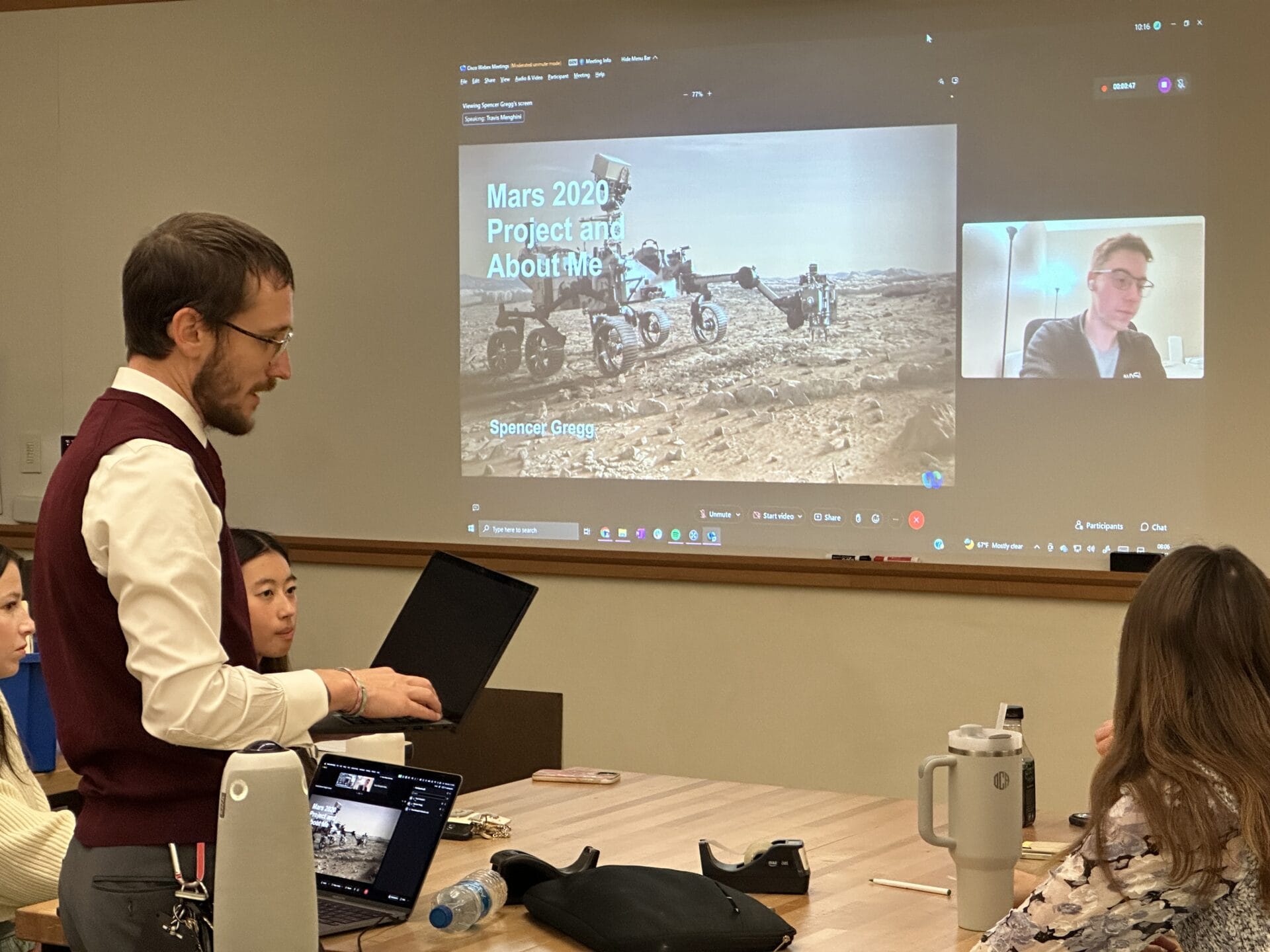
Gregg told the students that Perseverance has more cameras than any other mission to Mars. The engineering team uses engineering and instrument cameras. Navigation and safety cameras are used to drive, maintain its course, and look for rocks or steep drop-offs. The Mastcam-Z can turn 360 degrees and take a pano of where the rover is currently. The SuperCam uses a laser and captures the mineral composition of rocks a distance away. There are nine engineering cameras, seven engineering cameras, and seven entry, descent, and landing (EDL) cameras.
«With two microphones, Perseverance is a good listener,» Gregg said. «The rover recorded the first sounds from Mars. These sounds give useful information about rocks, such as their density.»
Perseverance is loaded with a variety of tools that help it not only navigate the Martian terrain but collect data for the scientists back on Earth. It has arms with tools, cameras, and drills that gather information to uncover rocks’ origins, history, and structure. It even has X-ray vision and can take fine-scale mineral maps. It’s three drills are used to abrade rocks and collect samples. A component called MOXIE converts carbon dioxide from Mars’ atmosphere into breathable oxygen, a test to explore the possibility of astronauts living and working on Mars long-term. Perseverance even has ground-penetrating radar on its belly, allowing us to see geographical features under the surface.
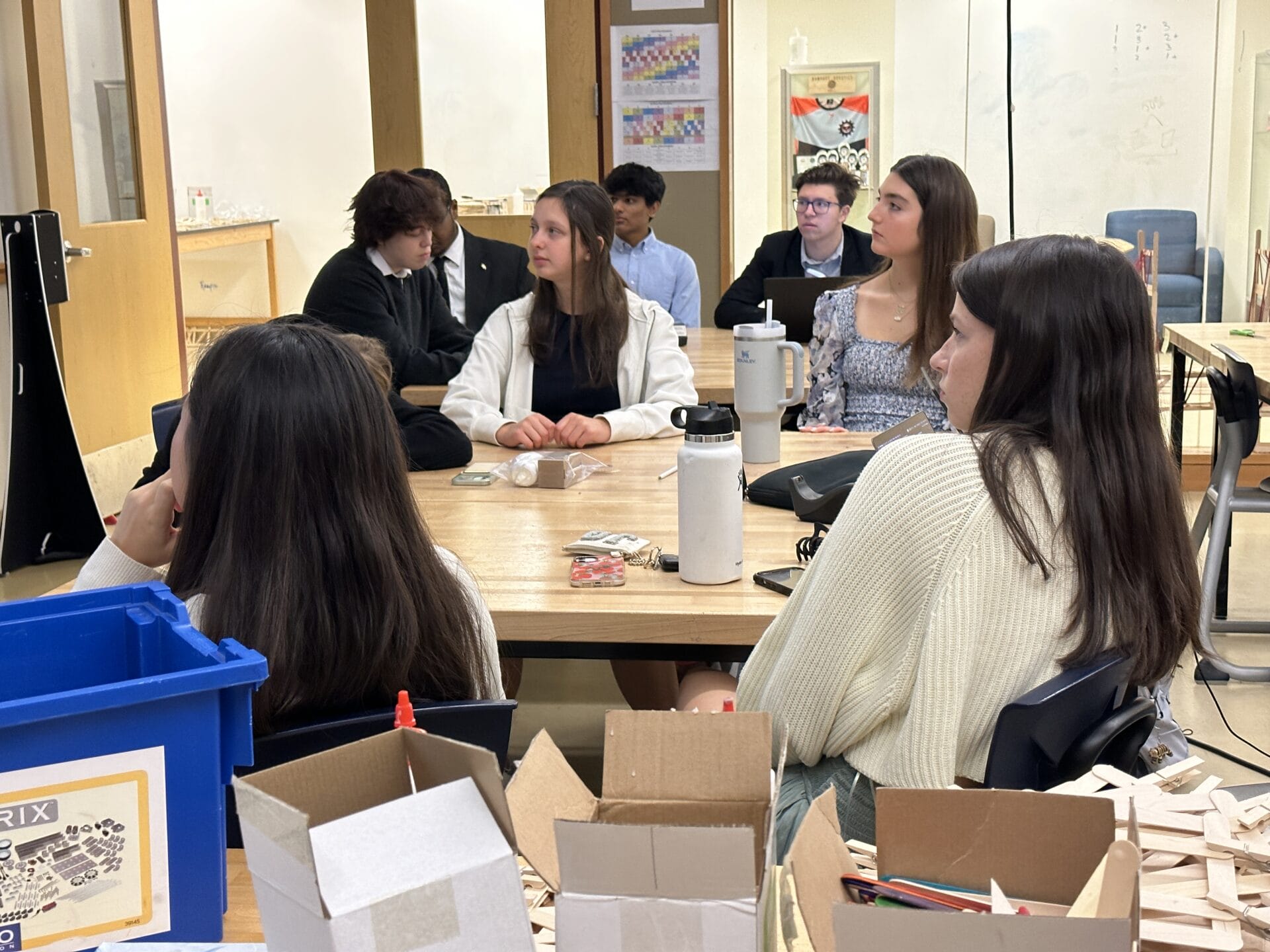
Rover Campaigns
Gregg and his team are constantly planning the next campaign for Perseverance, sending commands to the rover (uplink), and receiving data from the rover (downlink). The downlink data lets the team check to ensure Perseverance completed its task correctly and analyze health and performance. His shifts vary, so the Engineering class was lucky that he was willing to be online at 6 a.m. his time on his day off to talk with them.
One of the most exciting advances of Perseverance was its passenger: a small helicopter named Ingenuity, which made history with the first powered, controlled flight on another planet. Ingenuity is solar-powered, and the data it collects on its flights helps engineers map out areas where Perseverance can go to, providing close-up images of the ground before Perseverance drives to it. «The air on Mars isn’t as dense as here on Earth, so it was an engineering challenge,» explained Gregg.
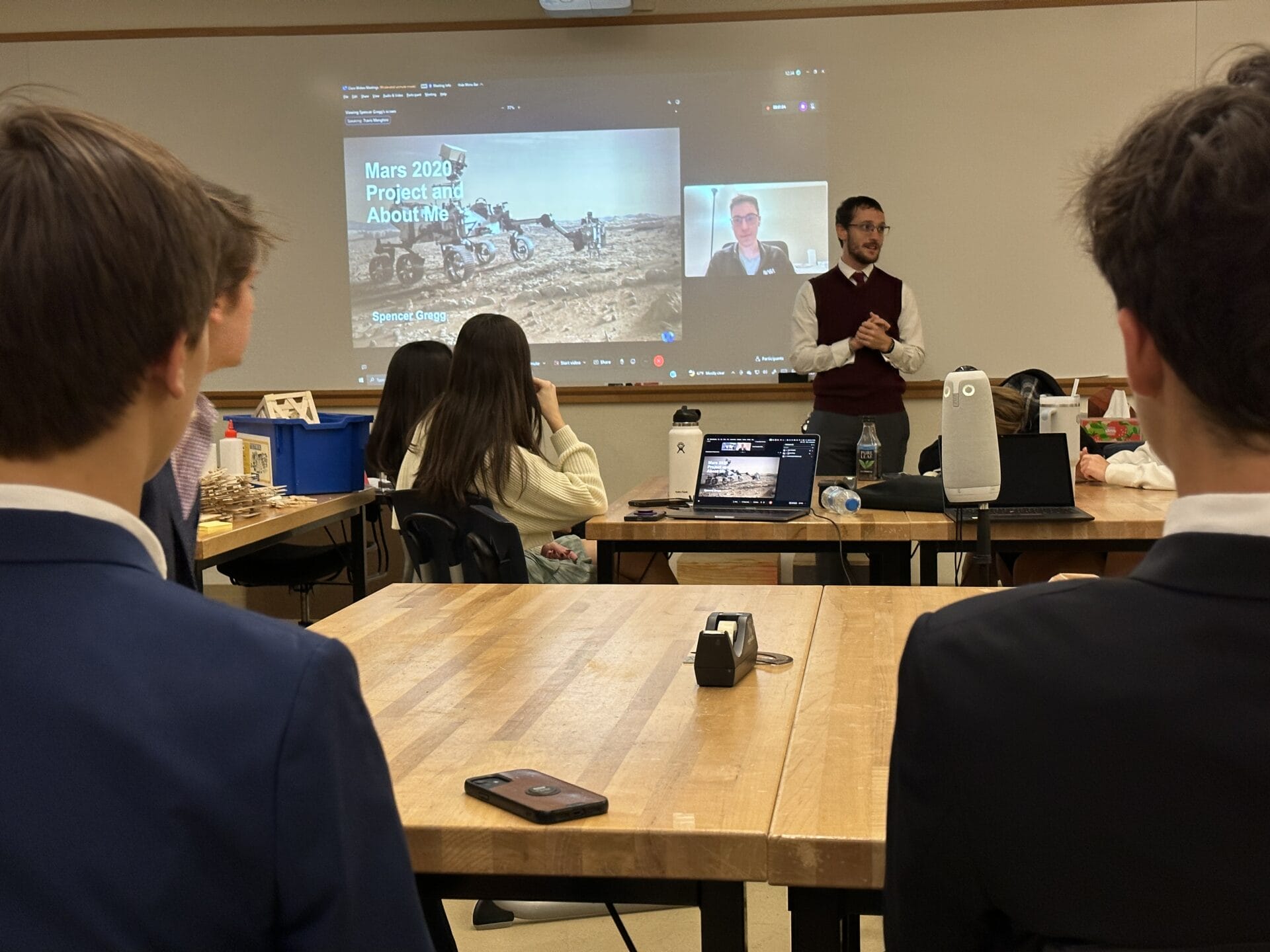
The Challenges of Exploring Mars
The Engineering students wanted to know about some of the challenges Gregg and his team face. «We can’t communicate with Perseverance for two weeks right now because of where Mars is, on the other side of the sun,» he said. He also talked about thermal restraints on the rover due to extreme cold, and how Perseverance can’t run at night because of that. «There are a lot of heaters on the actuator, but we’re limited to certain times of day because of temperature.»
They also wanted to know if weather impacts Perseverance. «In previous missions, there have been dust devils; they’re pretty common on Mars, and often it’s a good thing for the rover because it can clean off the dust that has collected. It’s not crazy weather, but high winds are usually what we face. It’s not too bad,» he said.
«We are always trying to meet the science constraints given, and not put the robot in danger,» Gregg said.
What a fascinating discussion for the students in Upper School Engineering! Many thanks to Spencer Gregg for spending time with our students and helping them see what it takes to explore Mars.
